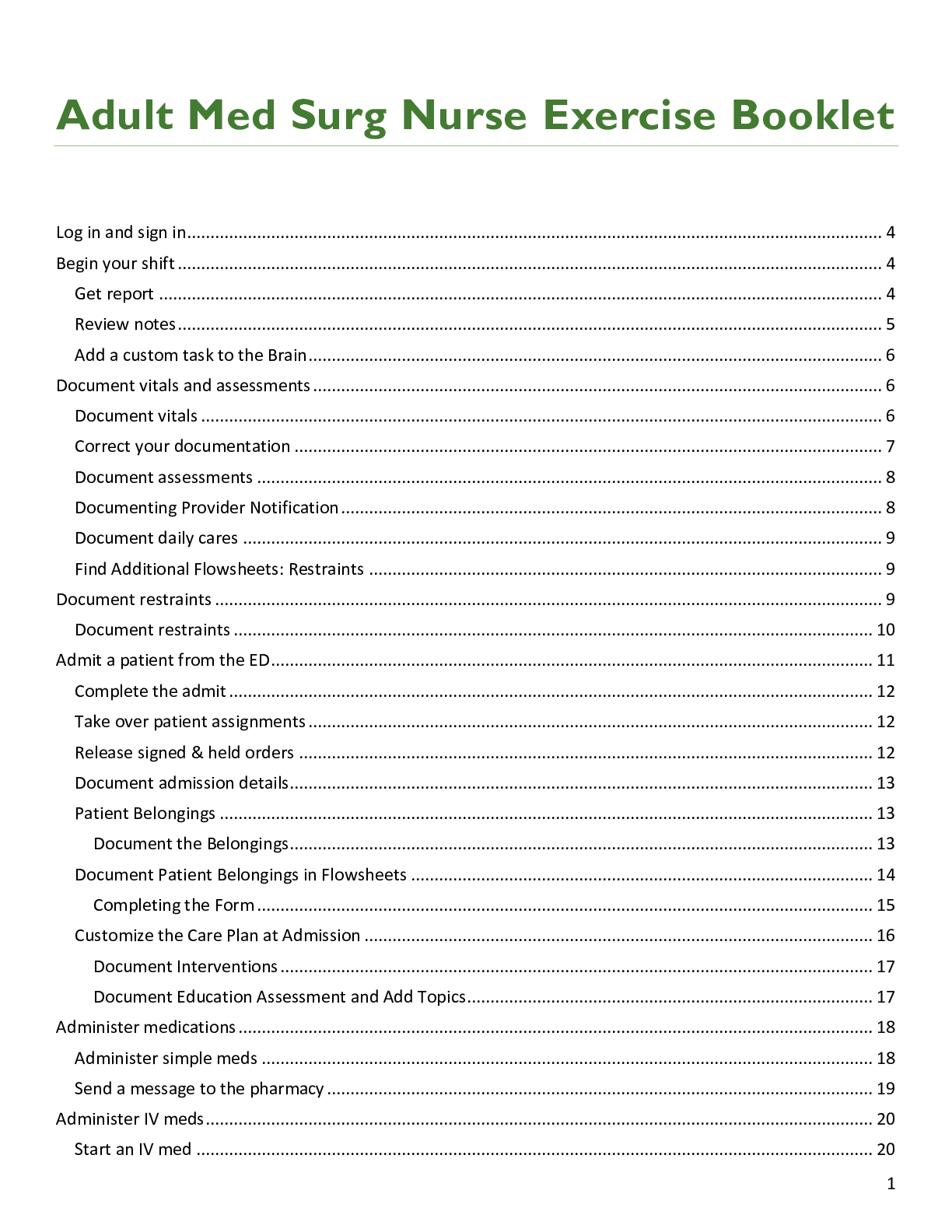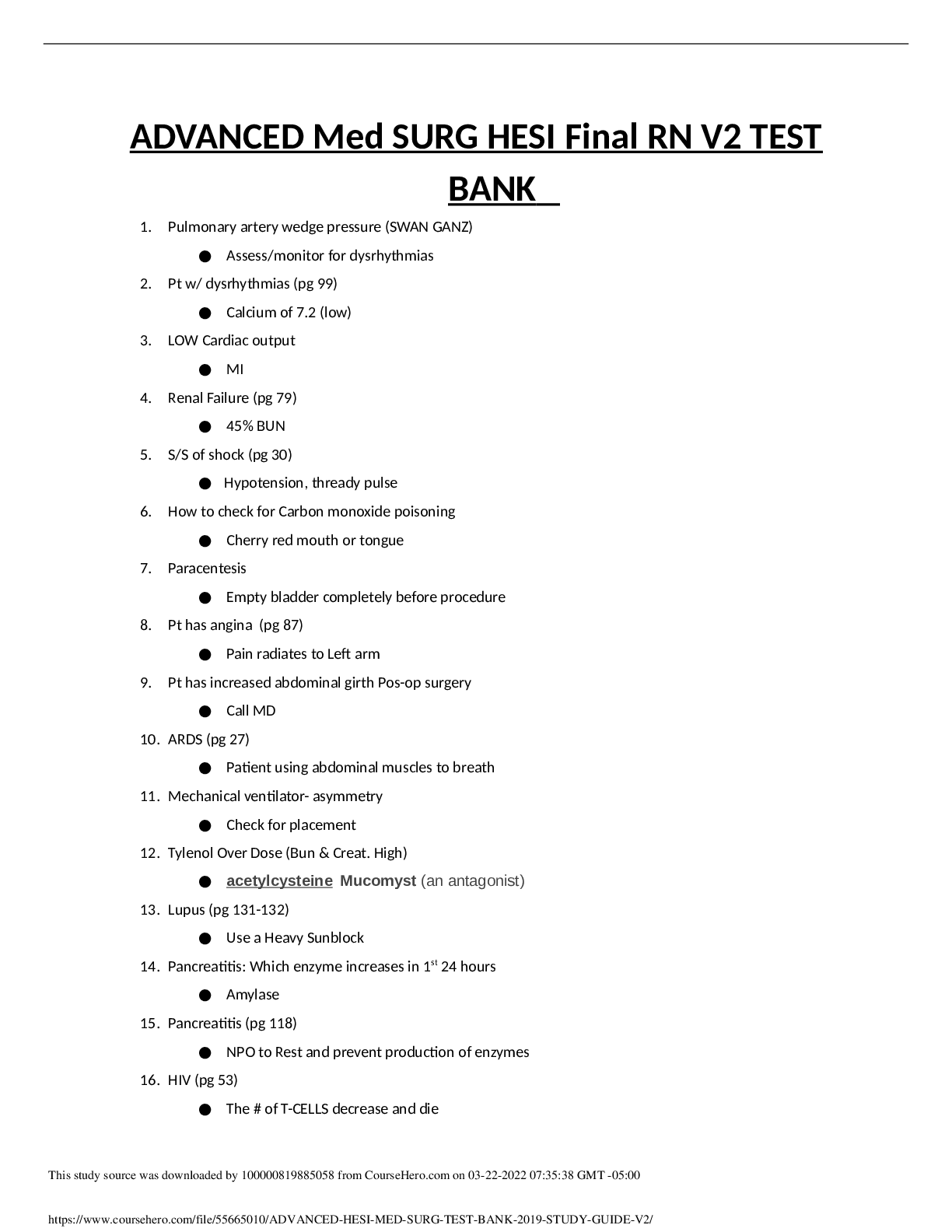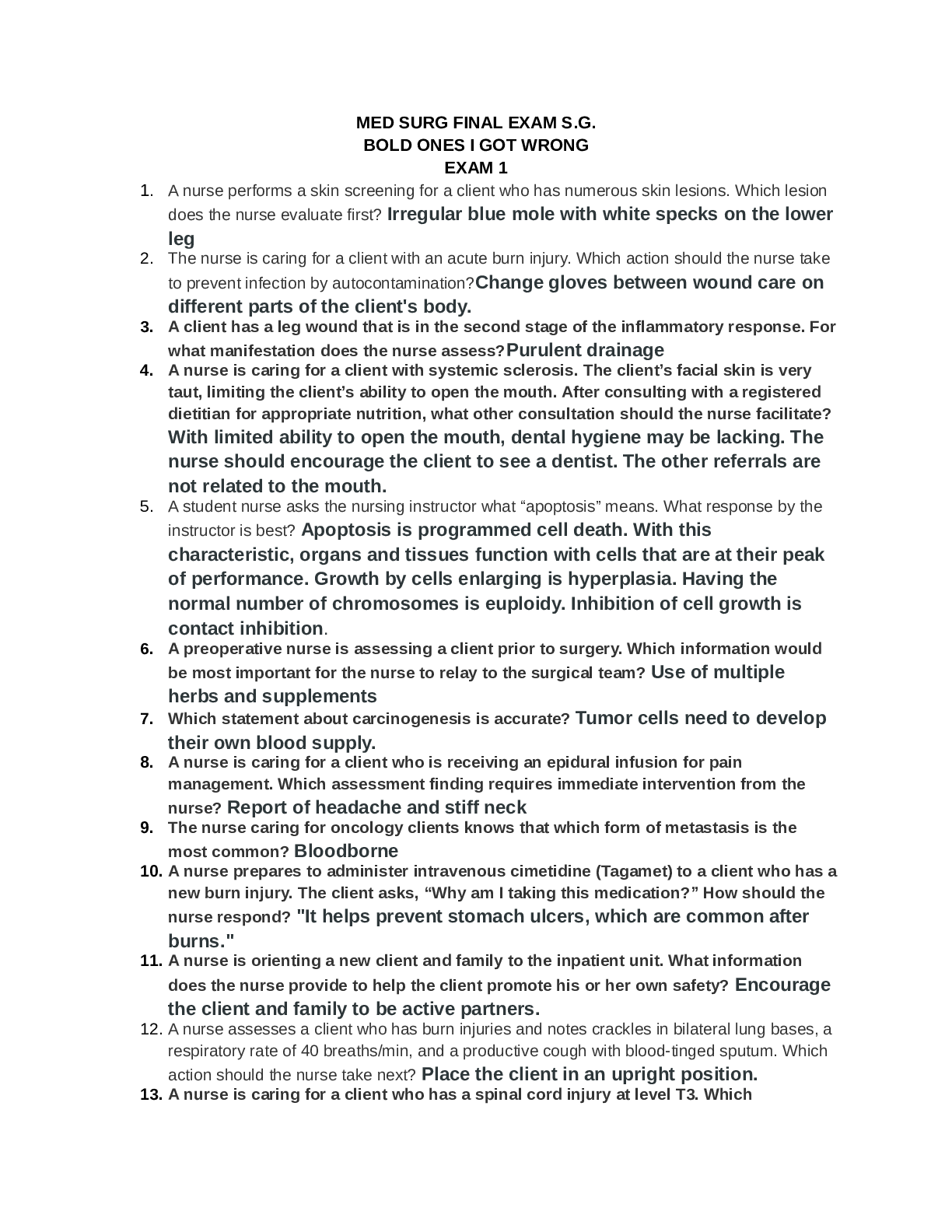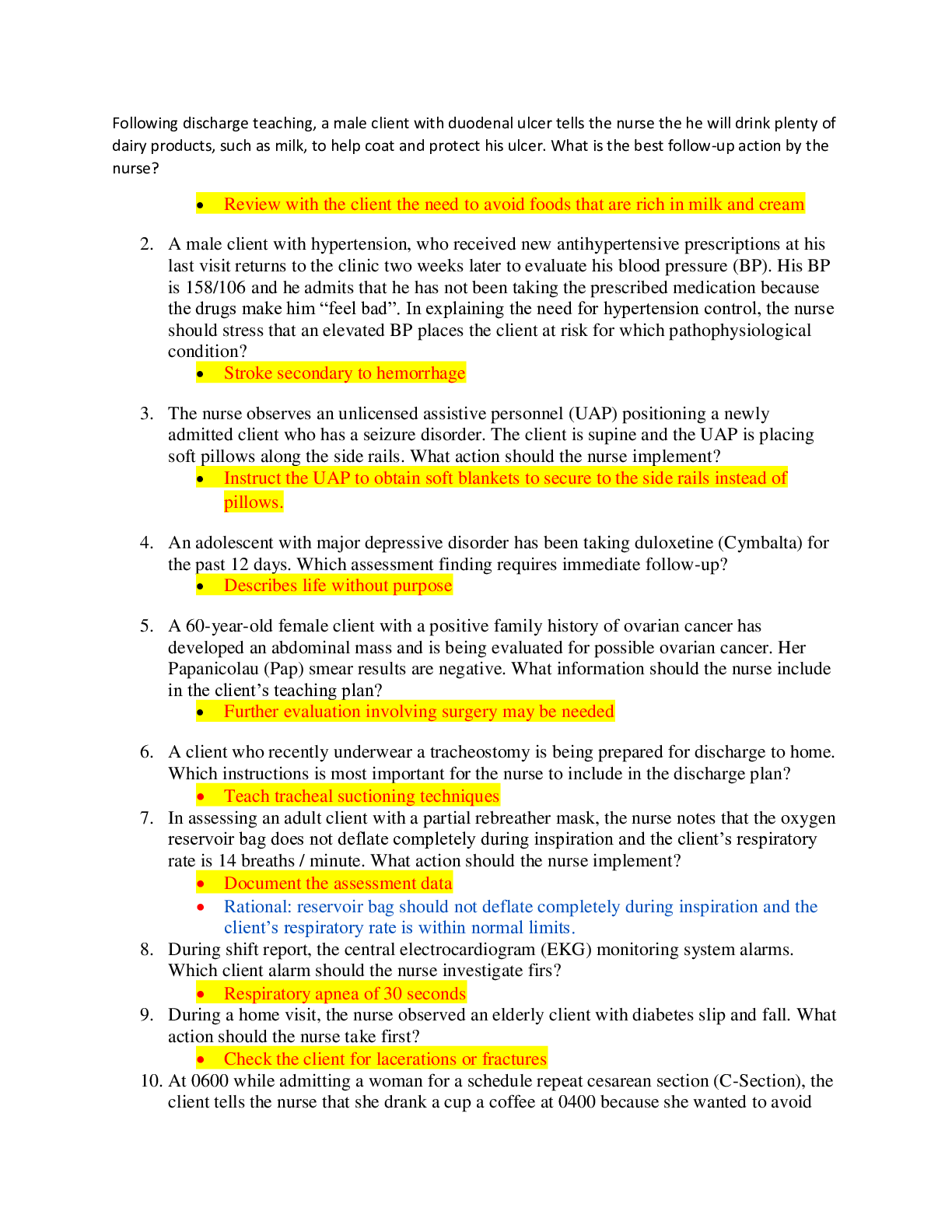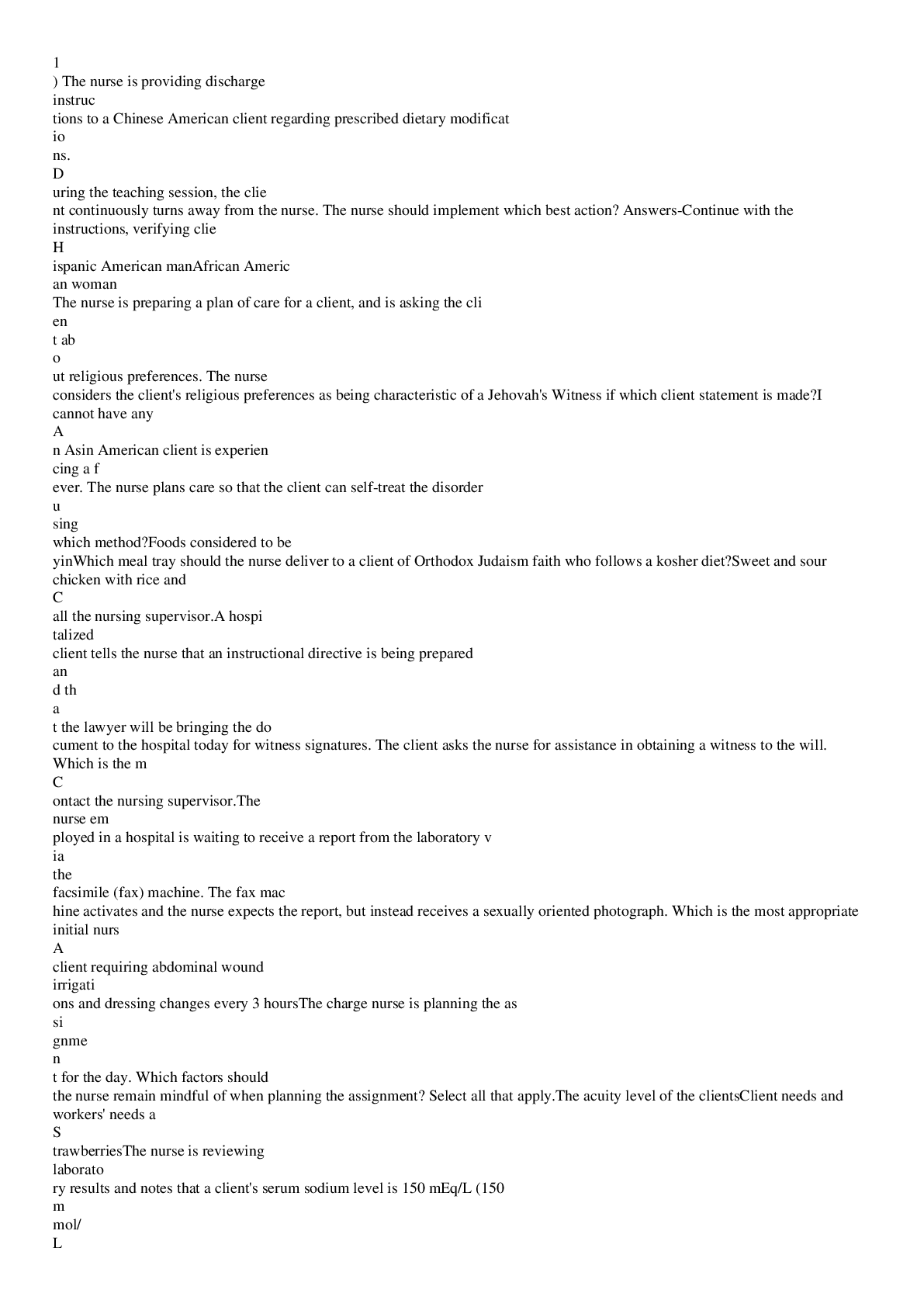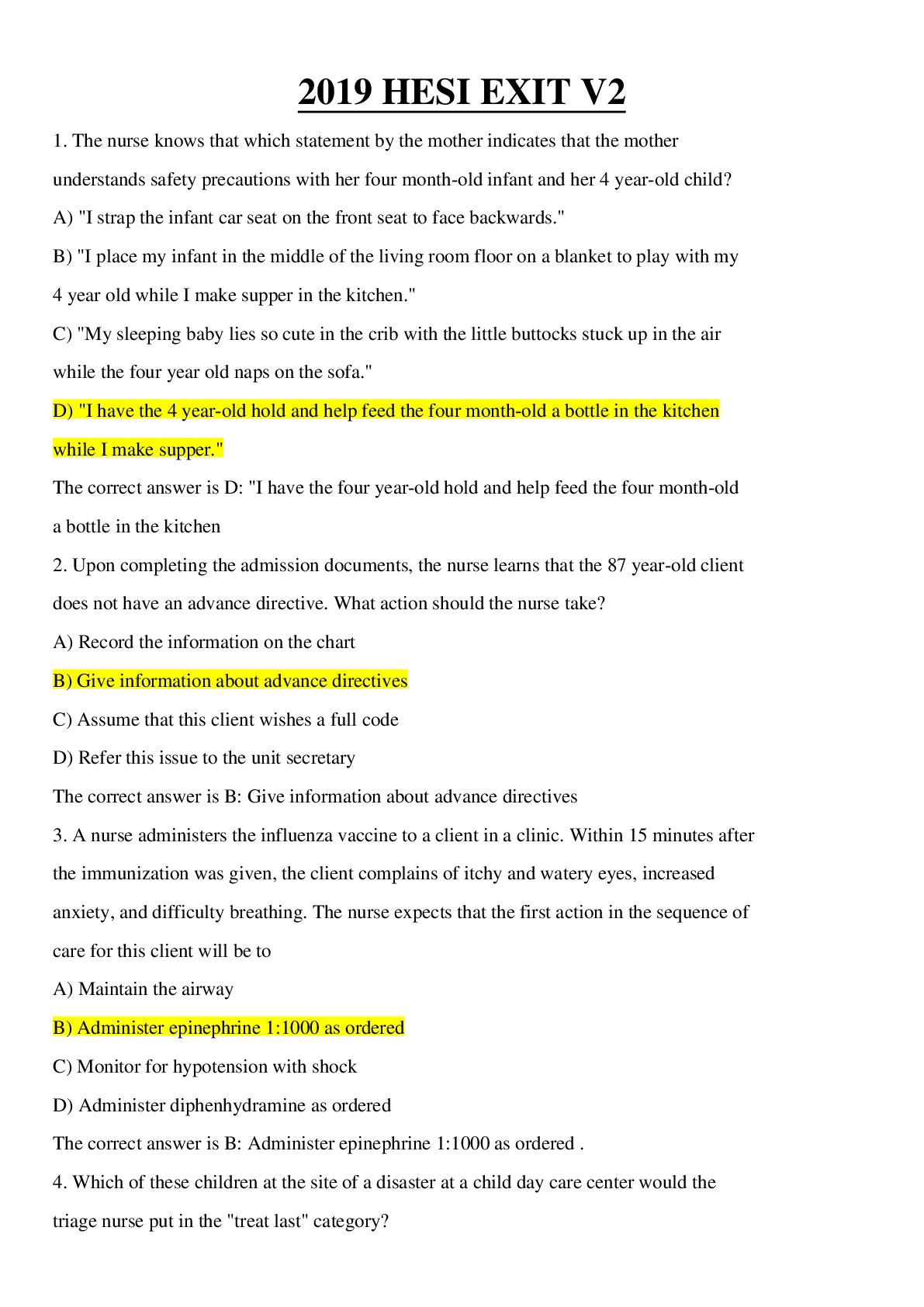*NURSING > HESI MED SURG > med surg 2 final. (All)
med surg 2 final.
Document Content and Description Below
Chapters 14 The irreversible stage=use of mechanical ventilation, altered consciousness, and profound acidosis. The compensation stage = decreased urinary output, confusion, and respiratory alkalosi... s. BP normal respirations are above 20 heart rate is above 100 but below 150 serum sodium and blood glucose levels are elevated The progressive stage =metabolic acidosis, lethargy, and rapid, shallow respirations. BP can no longer compensate the MAP falls below normal limits. Patients are clinically hypotensive; SBP of less than 90 mm Hg four main categories of shock are hypovolemic CVP reading is typically low in hypovolemic shock. circulatory (distributive), obstructive, cardiogenic, depending on the cause Vasoactive medications should be administered through a central venous line, because infiltration and extravasation of some vasoactive medications can cause tissue necrosis and sloughing. An IV pump must be used to ensure that the medications are delivered safely and accurately. These medications are not given by IM or by rapid IV push. neurogenic shock. parasympathetic stimulation. the client flat and elevates his or her feet. s/sx dry, warm skin, bradycardia, hypotension cardiogenic shock. Treatment : Sodium nitroprusside Chapters 62- Burn Lactated Ringer's solution= replaces lost sodium and corrects metabolic acidosis, both of which commonly occur following a burn. Albumin is used as adjunct therapy, not as primary fluid replacement. D5W isn't given to burn clients during the first 24 hours because it can cause pseudodiabetes. The client is hyperkalemic as a result of the potassium shift from the intracellular space to the plasma, so giving potassium would be detrimental. Acticoat moistened with sterile water only; never use normal saline. Do not use topical antimicrobials with Acticoat burn dressing. Keep Acticoat moist, not saturated. deep partial-thickness burn injuries, recovery is expected in 2 to 4 weeks. pulmonary damage from an inhalation injury? singed nasal hair, hoarseness, voice change, stridor, burns of the face or neck, sooty or bloody sputum, tachypnea. dressing change at the site of an autograft is performed how soon after the surgery? 2 to 5 days after surgery. foul odor or purulence may indicate infection and should be reported to the surgeon immediately. Sanguineous drainage on a dressing covering an autograft is an anticipated abnormal observation postoperatively. Homografts are skin obtained from recently deceased or living humans other than the client. biologic dressings and are intended to be temporary wound coverage. Xenografts = skin taken from animals (usually pigs). biologic dressings and are intended to be temporary wound coverage. Expected outcomes of fluid resuscitation urine output between 0.5 and 1.0 mL/kg/hr (30–50 mL/hr; 75 to 100 mL/hr if electrical burn injury), mean arterial pressure (MAP) pressure > 60 mm Hg, voids clear yellow urine with specific gravity within normal limits, serum electrolytes are within normal limits The greatest volume of fluid loss occurs first 24 to 36 hours after the burn , peaking by 6 to 8 hours. The key sign of the onset of acute respiratory distress syndrome (ARDS) hypoxemia zone of coagulation ( inner ) = at the center of the injury and is the area of injury that is most severe and the deepest. Where cellular death occur. zone of stasis ( middle)= the area of intermediate burn injury. compromised blood supply, inflammation, and tissue injury zone of hyperemia (outer zone) =the area of least injury, where the epidermis and dermis are only minimally damaged. Biobrane is a nylon-silicone membrane coated with a protein. Mederma ia a topical gel that can reduce scarring. Integra consists of a two-layer membrane: one is a synthetic epidermal layer , and the other contains cross-linked collagen fibers that mimic the dermal layer of skin. Transcyte is created by culturing human fibroblasts from the dermis with a biosynthetic semipermeable membrane attached to nylon mesh. Natural debridement =nonliving tissue sloughs away from uninjured tissue. Mechanical debridement = use of surgical tools to separate and remove the eschar. Enzymatic debridement= encompasses the use of topical enzymes to the burn wound. Surgical debridement = use of forceps and scissors during dressing changes or wound cleaning. The ABA consensus formula WT;80kg Burn 30% Given 50% first 8 hours? What is the amount first 8 hrs? first 24 hours in a range of 2 to 4 mL/kg/percentage TBSA Half of the calculated total should be given over the first 8 postburn hours , and the other half should be given over the next 16 hours. :2 mL × 80 kg × 30 = 4,800 mL of solution to be administered in the first 24 hours, 4800/2=2,400 mL, to be administered in the first 8 hours. clothing is on fire, placed in a horizontal position rolled in a blanket to smother the fire. Mafenide = is a strong carbonic anhydrase inhibitor and may cause metabolic acidosis. Application may cause considerable pain initially, thus premedicating the client Burn Prevention Minimize sun exposure: Advise that matches and lighters be kept out of the reach of children. Emphasize the importance of never leaving children unattended around fire or in bathroom/bathtub. Educate about the installation and maintenance of smoke and carbon monoxide detectors on every level of the home and changing batteries annually on birthday. Recommend the development and practice of a home exit fire drill with all members of the household. Advocate setting the water heater temperature no higher than 48.9°C (120°F). Educate about the perils of smoking in bed, smoking while using home oxygen, or falling asleep while smoking. Caution against using flammable liquids to start fires and/or throwing flammable liquids onto an already burning fire. Warn of the danger of removing the radiator cap from a hot car engine. Recommend avoidance of overhead electrical wires and underground wires when working outside. Advise that hot irons and curling irons be kept out of the reach of children. Discourage running electric cords under carpets or rugs. Recommend storage of flammable liquids well away from a fire source, such as a pilot light. Educate about the importance of being aware of loose clothing when cooking over a stovetop or flame. Recommend having a working fire extinguisher in the home and knowing how to use it. ABLE 62-1 Characteristics of Burns According to Depth Causes Skin Involvem ent Clinical Manifestatio ns Wound Appearan ce Recuperative Course and Treatment First Degree (Superficial) Sunburn Lowintensit Epidermis Tingling Hyperesthesia (hypersensitivi Reddened; blanches with Complete recovery within a few days Oral pain medications, cool ABLE 62-1 Characteristics of Burns According to Depth y flash Superficia l scald ty) [Show More]
Last updated: 2 years ago
Preview 1 out of 73 pages
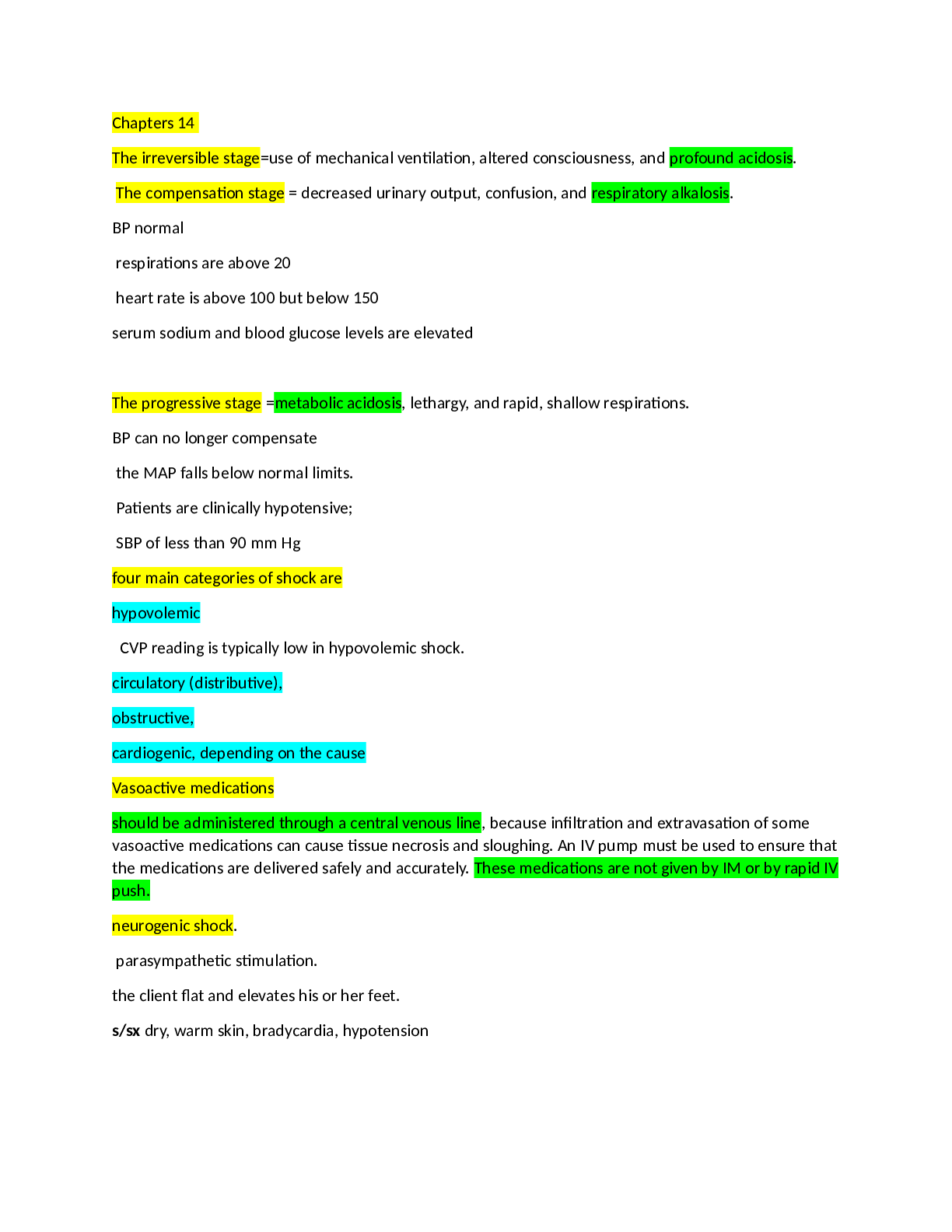
Buy this document to get the full access instantly
Instant Download Access after purchase
Buy NowInstant download
We Accept:

Reviews( 0 )
$10.50
Can't find what you want? Try our AI powered Search
Document information
Connected school, study & course
About the document
Uploaded On
Mar 26, 2021
Number of pages
73
Written in
Additional information
This document has been written for:
Uploaded
Mar 26, 2021
Downloads
0
Views
179

